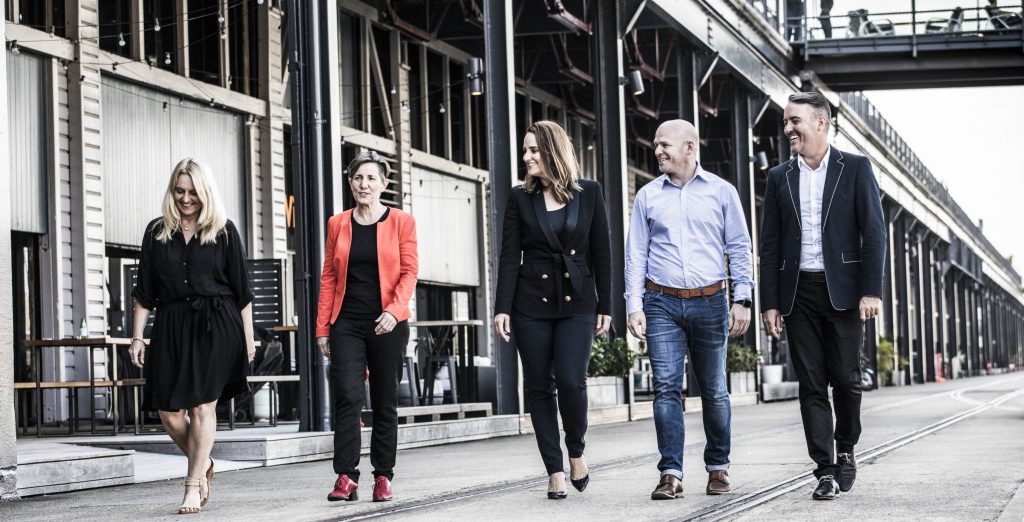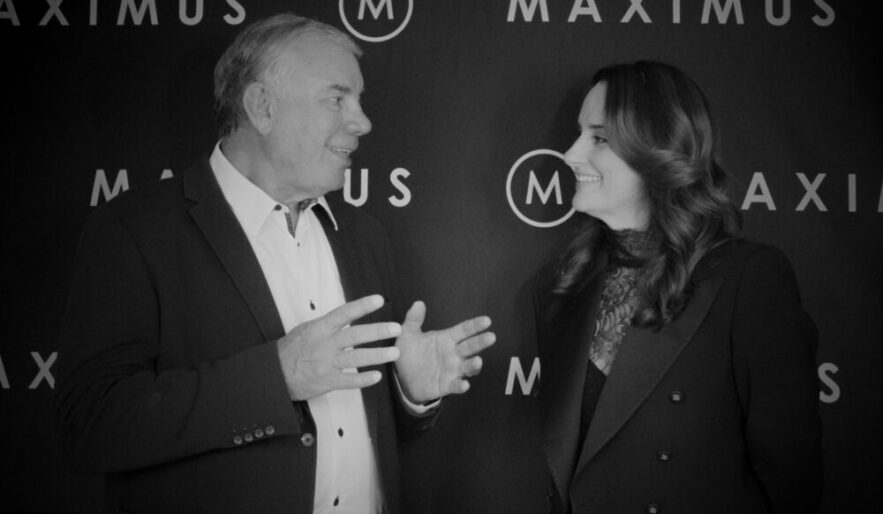The catchphrase “work-life balance” is outmoded: if you improve the experience of work, balance flows naturally into life.
The first thing for leaders to understand is that improved mental health and well-being outcomes are not achieved by reducing the work but by improving the very experience of work.
Leaders who deliberately set up their workplace for purpose, autonomy, flexibility and the opportunity for personal growth will create a thriving organisation, both in terms of productivity and the overall well-being of their staff.
The holy grail is to have employees operating regularly in the “flow” state: when work becomes a satisfying pleasure rather than an arduous task. All the steps you take in that positive direction will shift the productivity needle. It’s not an overnight fix: leaders must make the time to acquire the knowledge and skills to design organisations that are placed to reap the manifold rewards of thriving – for the organisation and its people.
IT’S NOT A FALSE CHOICE
Increasing productivity and nurturing mental health appear to be competing objectives, but there is significant evidence that they need not be.
It’s important to distinguish between mental health and mental illness. Much of the effort in recent years to increase employee well-being has focused on the identification and support of employees with mental illness, typically depression and anxiety. Eighty-one per cent of leaders across Australia report their organisations have programs and policies to address mental illness and regulatory changes have provided mentally ill employees the same rights and protections as those that are physically ill. That’s laudable progress.
Maximus works with leaders on designing their workplaces to cultivate mental wellness. At a basic level, thriving at work is achieved when a person has optimal levels of thinking, feeling and functioning as they work, manages their energy effectively and integrates their working- and non-working lives in a healthy and effective way. Creating such a positive work environment is synonymous with strong, sustainable performance.
Psychologists and researchers sometimes associate thriving with the experience of “flow”, when one becomes so fully immersed in an activity (in this case, work) that time flies. The tasks engage the person in such a way that the mind becomes more and more focused and, when it’s done, they feel a sense of accomplishment and time well spent. This feeling of absorption comes from the healthy way an employee thinks, feels and functions while working. The positive experience of absorption combined with the sense of accomplishment gives the mind an energy boost – hard work can be energising rather than draining. And the more an employee has this experience, the more likely they are to be thriving.
By definition, of course, thriving requires time and space to recharge. Even if work has been successfully set up to be an energising place, the mind needs time away to replenish. Thriving is the healthy state of being absorbed and energised during periods of productive work, recovering effectively afterwards and bouncing back quickly. Employees who thrive on the job find it easier to detach from work at its completion and engage in healthy recovery activities during their leisure time, such as exercising or learning. And so it flows that employees who thrive have greater well-being, at work and at home.
WHAT PEOPLE NEED TO THRIVE AT WORK
+ Sense of control.
+ Being driven by a sense of purpose and meaning.
+ Alignment of personal goals and values with those of the organisation.
+ Confidence combined with competence.
+ Continual personal growth.
+ Optimism for the future.
“The positive experience of absorption combined with the sense of accomplishment gives the mind an energy boost – hard work can be energising rather than draining”
HOW LEADERS CAN HELP
Leaders at all levels can support the development of thriving employees. Their specific roles depend on many factors, including the nature of their relationship to employees, and their level of power and influence over the internal environment of the organisation. Above all, crucial to driving a culture of thriving is the ability to:
Connect
Front-line supervisors and managers cultivate thriving by connecting with employees; building strong relationships with each team member; coupling individual interests and motivations to the organisation’s vision and shared team goals; and focusing on individualised development and support. To do this effectively, managers must:
+ Be open, honest and constructive in communication with people.
+ Promote learning and development.
+ Show genuine interest in each individual team member, with focused time and attention.
+ Ensure each team member is optimally challenged by their work and support them individually.
+ Provide ongoing and helpful feedback, recognition and coaching.
+ Focus on moments that matter: thank staff, praise them authentically, cheer them up and go above and beyond to help them.
Re-design
Mid-level leaders with a broader scope are in a position to contribute by changing – and improving – the way they work with their team, allowing team members to have a sense of control over the design of their work, rather than feeling changes are being imposed on them. Thriving work design includes:
+ Fast and constructive feedback loops; employees know from the work itself whether they are doing a good job.
+ A balance of autonomy and leader support.
+ Control over when, where and how work is done.
+ Clarity in the role structure and expectations.
+ Optimal levels of motivating and energising challenge.
+ The time and resources to complete tasks fully.
+ Opportunities to work collaboratively through positive interactions with others.
When leaders provide these things, employees build confidence by taking on new challenges and building their knowledge and skills. This increased confidence encourages further proactivity which, if allowed enough autonomy, they can use to re-craft their work further. Work design is facilitated by the leader, but the ultimate goal is that employees and the team continually re-design the work to make it possible to have the work experiences associated with thriving.
While culture change is a slow process, mid-level leaders can take steps to develop a climate of psychological safety, an environment where individuals can experiment and learn and express themselves without fear of negative consequences to their image, status or career. Academic and practical studies, including well-known research at Google, provide strong evidence that psychological safety is critical. Google believes it is far and away the number one factor that distinguishes effective teams. Work environments characterised by psychological safety build agility, resilience and create the conditions for the team to thrive in times of change.
Embed
Senior executives have power over more subtle but potentially impactful levers, including policies, procedures, communication and the entire culture of the organisation. Culture encapsulates the widely held beliefs and assumptions in an organisation – about work, performance and acceptable behaviour. A culture that supports thriving is fair and empowering, enabling people at all levels to make decisions, contributions and changes to the way they work. When employees feel trusted and supported by the culture, they are more likely to connect with others, driving a social environment which supports further thriving.
Such a culture can only be achieved when what the organisation’s policies say and what its leaders do are aligned. It is crucial the organisation has values, policies, services, career pathways and leadership development programs that support thriving. However, leaders must espouse the structural support in their every-day behaviour to embed thriving in the culture.
Flexible working policies are a perfect example of supportive structures that can only cultivate thriving among people if the behaviour and capability of leaders allows. Evidence shows that flexible working increases thriving, but only if leaders work with their team to re-craft the way they work to suit their individual needs and help them feel greater control over their work. For maximum effect, senior leaders need to lead by example with their own working style, too.
“Thriving is the state of being absorbed and energised during periods of productive work and then recovering effectively afterwards, bouncing back quickly”
EMBRACE THE NEW NORMAL
It is unlikely that the economic or competitive environment for business is likely to become easier anytime soon. While technology is changing, and competition increasing, productivity improvements are lagging. Anxiety, depression and workplace stress are growing and employers’ obligations to attend to the mental wellbeing of employees is increasing.
Leaders at all levels are caught in the middle and need help. Programs and policies to address mental illness are required, but so too are proactive strategies to enhance mental wellness in the workplace. To bridge the gap between mental health and organisational productivity and performance, there is a clear need to re-frame the issue and capitalise on the opportunity to build organisations with employees that thrive.
Leaders at all levels have critical roles: to connect with people, to re-design work, to embed psychological safety and to change the environment and culture. At Maximus, our experience and analysis indicate that managers at the front line, as well as senior leaders and executives, need additional development and coaching to help employees thrive.
Front-line leaders need the skills (and practice) to engage with their employees in a personal but appropriate manner. They need to be able to spot both the signs of mental distress and the opportunities at work to help employees achieve positive mental states. Maximus has designed developmental experiences that can help managers build sensitivity to these issues.
Middle managers frequently lack the skills to analyse jobs and work design and make changes that can have a positive impact on the mental health of employees. Focused development on how to design work, as well as structured problem-solving, can help middle managers build these skills, while executives – who are often quite removed from the front line – miss opportunities to shape the values and culture of the organisation to enable thriving. Experiences that actively bring top-tier leaders these insights about their organisations – as well as an awareness of other organisations across sectors and industries – will help these leaders, at every level, confidently address these challenges.
This article was originally published in the 1st edition of M Magazine, an exclusive print magazine aimed at inspiring and driving change through Australia’s executives and heads of HR.







